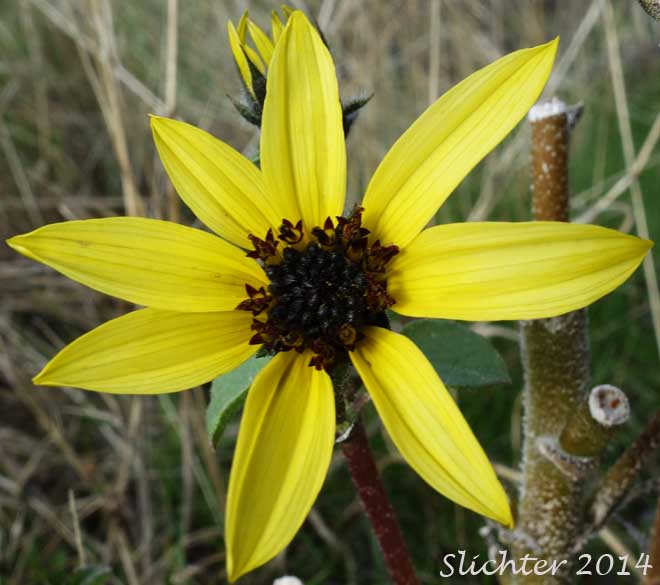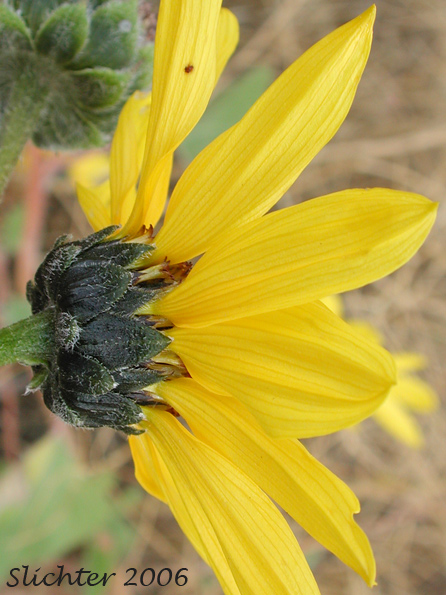 -
- 
 -
- 
 The photo at right shows a close-up of the involucral bracts of common sunflower as seen along Washington Highway 14 at MP 91 above the Avery Sand Pit........October 7, 2006.
The photo at right shows a close-up of the involucral bracts of common sunflower as seen along Washington Highway 14 at MP 91 above the Avery Sand Pit........October 7, 2006.
Common sunflower is a common annual of dry western habitats. It stands from 40 to 200 cm tall, and has a rough, hairy texture to the stems and leaves. The stem often has side branches which end in flower heads. It has broad,triangular leaf blades with slightly toothed margins. The leaf is a dull dark green. The leaves are primarily alternate, with long petioles.
One single, stout stem bears several large flower heads of numerous yellow ray flowers and a reddish brown central disk. The disk is seldom less than 2 cm wide. The involucral bracts (see lower photo) are usually ovate or ovate-oblong and narrowed above the middle to a pointed tip. The seeds are edible by both humans and animals, and the plant was cultivated in pre-Columbian times for the seeds.
The Common sunflower flowers from June into October. During warmer autumns (with a little moisture), it may continue blooming as late as early December in the Columbia River Gorge.
Open, dry or moderately moist soils, usually in disturbed areas. I've seen some information stating that it is largely limited to disturbed areas near roadsides and for that reason, some feel it is an introduced species in the Pacific Northwest.
Common sunflower is native to the western U.S., and now widespread as a weed.
In the Columbia River Gorge it may be found between the elevations of 100'-600' from Troutdale, OR east towards Wallula Gap.